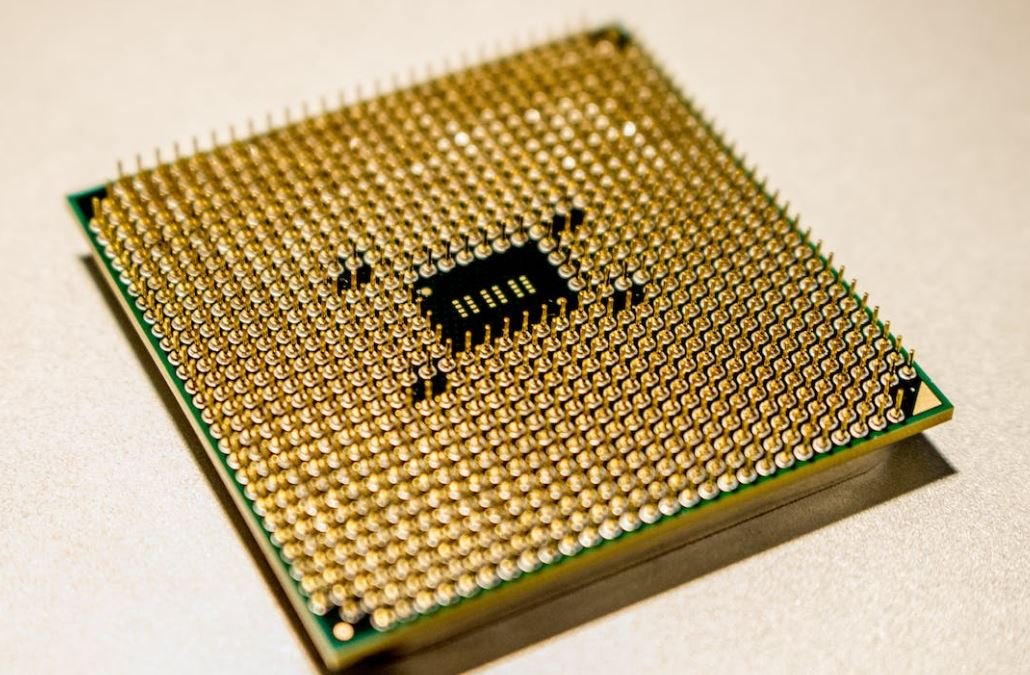Who Built AI
Artificial Intelligence (AI) has rapidly advanced in recent years, revolutionizing various industries and
aspects of our lives. But have you ever wondered who exactly built AI? Let’s dive into the origins of this
groundbreaking technology and explore the key players in its development.
Key Takeaways:
- AI has been a collaborative effort involving researchers, scientists, and engineers from various fields.
- The development of AI can be traced back to the early days of computing and the concept of machine
learning. - Important contributors to AI include Alan Turing, John McCarthy, and Geoffrey Hinton.
- Advancements in computing power and the availability of vast amounts of data have propelled AI forward.
- AI continues to evolve through ongoing research and development.
The Early Beginnings
The roots of AI can be traced back to the 1940s and 1950s, where the groundwork for modern computing was
being laid. Alan Turing, known for his work in cryptography and the concept of Turing machines, brainstormed
the idea of designing machines that could mimic human intelligence.
His idea of the “universal machine” laid the foundation for the development of AI.
The Pioneers
In the late 1950s, John McCarthy coined the term “Artificial Intelligence” and organized the Dartmouth
Conference, considered the birth of AI as a field of research. McCarthy, along with Marvin Minsky, Nathaniel
Rochester, and Claude Shannon, established the groundwork for AI as we know it today.
They aimed to create machines that could perform tasks that previously required human intelligence.
The Rise of Machine Learning
In the 1980s, Geoffrey Hinton and others started exploring the potential of neural networks, setting the
stage for the rise of machine learning. Hinton’s work on backpropagation allowed neural networks to learn
and adapt from input data, marking a significant milestone in AI.
Neural networks enabled AI systems to recognize patterns and make intelligent decisions.
Advancements and Applications
With the advancements in computing power and the availability of enormous datasets, AI has made rapid
progress in recent years. Today, AI is used in various applications, including autonomous vehicles,
recommendation systems, natural language processing, and healthcare diagnostics.
Contributors to AI
| Name | Contribution |
|---|---|
| Alan Turing | Laid the foundation for AI with his concept of the “universal machine.” |
| John McCarthy | Credited with coining the term “Artificial Intelligence” and organizing the Dartmouth Conference. |
| Geoffrey Hinton | Pioneered the use of neural networks and backpropagation, enabling machine learning. |
The Future of AI
The field of AI is continuously evolving, with ongoing research and development pushing its boundaries. As
AI becomes increasingly integrated into our lives, it is essential to address ethical considerations and
ensure responsible and accountable AI systems.
Conclusion
AI is a result of the collective efforts of countless individuals and organizations over several decades. The
journey from Turing’s concept to today’s advanced AI systems demonstrates the remarkable progress made in
this field. With the potential to revolutionize industries and solve complex problems, AI will continue to
shape the future.

Common Misconceptions
Misconception 1: AI is built solely by humans
One common misconception about AI is that it is completely built by humans. While humans play a crucial role in developing and programming AI systems, there is another important element at play – machine learning algorithms. These algorithms allow AI systems to learn from vast amounts of data and make predictions or decisions based on that information.
- AI involves the use of machine learning algorithms.
- Humans provide the initial framework and programming for AI systems.
- AI systems can improve and refine their capabilities over time through machine learning.
Misconception 2: AI is capable of human-like intelligence
Another misconception is that AI possesses the same level of intelligence as humans. While AI can perform complex tasks and exhibit intelligent behavior within a specific domain, it is still far from achieving true human-like intelligence. AI systems are designed to excel at specific tasks and are limited by the data and algorithms they are trained on.
- AI systems are specialized in specific tasks or areas.
- True human-like intelligence has not been achieved in AI systems.
- AI’s capabilities are determined by its training data and algorithms.
Misconception 3: AI will replace human jobs entirely
Many people fear that AI will lead to widespread unemployment as it replaces human jobs completely. While AI has the potential to automate certain tasks, it is unlikely to replace human jobs entirely. Instead, AI is more likely to augment human work, assisting in repetitive or time-consuming tasks and enabling humans to focus on more complex and creative aspects of their jobs.
- AI can automate certain tasks but is unlikely to replace all human jobs.
- AI may augment human work, freeing up time for more complex tasks.
- Humans and AI can work together synergistically to achieve better results.
Misconception 4: AI is unbiased and objective
Another misconception about AI is that it is inherently unbiased and objective. However, AI systems can inherit the biases present in the data they are trained on. If the training data contains biases, the AI system can learn and perpetuate those biases in its decisions and outputs. It requires careful attention and proactive efforts to ensure that AI systems are trained on diverse and representative data, mitigating potential biases.
- AI systems can unintentionally amplify biases present in training data.
- Ensuring diversity in training data is important to avoid biased outcomes.
- Regular audits and evaluation are necessary to identify and address biases in AI systems.
Misconception 5: AI is a recent development
Many people believe that AI is a recent advancement, when in fact it has been around for decades. The concept of artificial intelligence dates back to the mid-20th century, with significant progress made in the field since then. While recent advancements in computing power and data availability have accelerated AI development, it is important to recognize that AI has been a field of study and research for a long time.
- AI has a long history, dating back to the mid-20th century.
- Recent advancements have accelerated AI development.
- AI will continue to evolve and progress in the future.

Building AI: A Look Into the Minds Behind Artificial Intelligence
Artificial Intelligence (AI) is reshaping the world as we know it, revolutionizing various industries and transforming how we interact with technology. But who are the formidable minds responsible for creating this incredible technology? In this article, we delve into the individuals, organizations, and countries that have made crucial contributions to the development of AI.
An Unconventional Collaboration: Stanford University and Google
One of the most iconic partnerships in the field of AI is between Stanford University and Google. Together, they have pioneered breakthroughs in deep learning algorithms and neural networks, resulting in significant advancements in computer vision, natural language processing, and speech recognition.
DeepMind: The Innovators Shaping the Future of AI
DeepMind, a British AI company acquired by Google in 2014, has made extraordinary strides in AI research. Their AlphaZero program has mastered complex games like chess and Go, showcasing the potential of AI to surpass human capabilities in strategic reasoning and decision-making.
Cutting-Edge Innovation in China: Baidu
Baidu, often referred to as the “Google of China,” has emerged as a major player in the AI field. Through extensive research and development, this technology giant has made remarkable advancements in natural language processing, autonomous vehicles, and facial recognition.
Innovating for Good: OpenAI
OpenAI, a research laboratory co-founded by Elon Musk and Sam Altman, aims to ensure that AI benefits all of humanity. Working towards the development of safe and beneficial AI, OpenAI conducts groundbreaking research while promoting transparency and collaboration within the scientific community.
AI Superpower: United States
The United States, with its vibrant tech ecosystem and numerous research institutions, has been a driving force in AI innovation. Companies like Microsoft, Amazon, and IBM have significantly contributed to the development of AI technologies, including cloud-based AI applications and machine learning frameworks.
Canada’s AI Hub: University of Toronto and Montreal Institute for Learning Algorithms (MILA)
Canada has become a hotbed for AI research, with the University of Toronto and MILA leading the charge. These institutions have produced groundbreaking contributions to machine learning, such as developing transformer models that have revolutionized natural language processing tasks.
Germany’s Excellence: The Max Planck Institute for Intelligent Systems
The Max Planck Institute for Intelligent Systems in Germany is renowned for its interdisciplinary research in AI and robotics. Their work has significantly impacted areas such as computer vision, artificial neural networks, and robotic manipulation.
An AI Powerhouse: South Korea
South Korea has been at the forefront of AI development due to significant investments and government support. With companies like Samsung and LG leading the charge, South Korea has made strides in AI-powered healthcare, robotics, and smart cities.
Israel’s Technological Prowess: The Weizmann Institute of Science
The Weizmann Institute of Science in Israel has been instrumental in pushing the boundaries of AI research. Their innovations range from computer vision algorithms that enhance image recognition to the development of advanced AI systems for autonomous driving.
In summary, the development of AI is a global effort, spearheaded by influential individuals, research institutions, and technology companies. Their collective contributions have paved the way for groundbreaking advancements, setting the stage for a future where artificial intelligence continues to transform how we live and interact with the world.
Frequently Asked Questions
1. What is AI?
AI, or Artificial Intelligence, refers to the simulation of human intelligence in machines that are programmed to think and learn like humans. It encompasses various fields, including machine learning, natural language processing, and computer vision.
2. How was AI developed?
AI has been developed through decades of research and advancements in computer science. It began with early pioneers like Alan Turing and culminated in the development of powerful algorithms and computing capabilities necessary for AI systems.
3. Who are some notable contributors to AI development?
There have been numerous notable contributors to the development of AI. Some of the pioneers include Alan Turing, John McCarthy, Marvin Minsky, and Allen Newell. Additionally, companies like IBM, Google, and Microsoft have also played significant roles in AI research and development.
4. What are the different approaches to AI development?
AI development can be approached through various methods, including symbolic AI, connectionism, and statistical AI. Symbolic AI focuses on representing knowledge explicitly, while connectionism emphasizes artificial neural networks. Statistical AI relies on statistical techniques and large datasets to train AI models.
5. How is AI trained?
AI is trained through a process called machine learning. This involves feeding the AI system with large amounts of data and allowing it to analyze and learn patterns from the data. With time and continuous training, the AI system improves its performance and becomes more accurate in making predictions or performing tasks.
6. Can AI improve itself?
Yes, AI can improve itself through a technique called reinforcement learning. In reinforcement learning, an AI system interacts with its environment, receives feedback in the form of rewards or penalties, and adjusts its actions to maximize the rewards. This iterative process allows the system to get better over time.
7. Are there any ethical concerns related to AI development?
Yes, AI development raises several ethical concerns. These include issues such as privacy, bias in algorithms, job displacement, and the potential misuse of AI technology. Ensuring the responsible and ethical use of AI is crucial to address these concerns.
8. Can AI replace humans in the workforce?
AI has the potential to automate certain tasks and jobs, leading to concerns about job displacement. While AI can take over repetitive and mundane tasks, it is unlikely to replace humans entirely. Instead, AI is more likely to augment human capabilities, allowing individuals to focus on more complex and creative tasks.
9. What are some real-world applications of AI?
AI has found numerous applications across various industries. Some examples include virtual assistants (e.g., Siri, Alexa), autonomous vehicles, fraud detection systems, personalized recommendation engines, and medical diagnostic tools. These applications demonstrate the wide-ranging potential of AI.
10. How will AI shape the future?
AI is expected to have a transformative impact on various aspects of society. It has the potential to revolutionize industries, improve efficiency, and enhance decision-making processes. However, it also poses challenges that need to be addressed, such as the ethical implications and ensuring AI benefits everyone.





